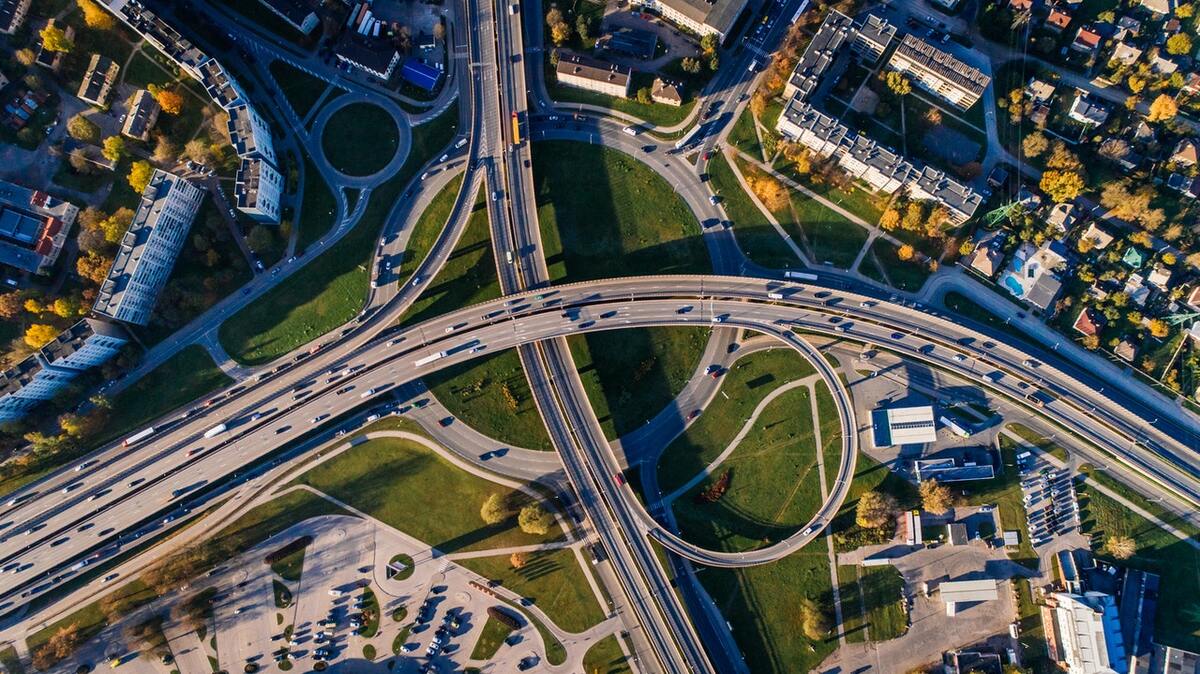Building Greener Roads: New Developments in Highway Construction

The construction industry and transportation division have long-standing associations with environmental degradation. But we can conduct green highway development, decreasing emissions and improving local air quality. Before evaluating the sustainable building methods, we must examine the ecological issues they challenge.
Roads’ Environmental Impacts
Nearly 21% of national greenhouse gas emissions come from transportation. Both the fuel sources and the routes are responsible for high pollution. Various automobile manufacturing companies are developing zero-emission vehicles.
As tailpipe pollution decreases, we must improve the sustainability of roads to reduce the enhanced greenhouse effect. Developing efficient travel routes can save drivers time and lower emissions. Utilizing eco-friendly products and practices in road construction can additionally improve the industry’s sustainability.
Asphalt composes a significant quantity of roads, generating a smooth and sturdy driving platform. Unfortunately, in the summer heat, the material creates chemical emissions. When studying transportation emissions, researchers previously turned to combustion pollution.
Recent studies signify a prolonged release of organic compounds and toxins from asphalt. When heat and solar radiation interact with the material, emissions are generated. It is a two-sided issue because rising global temperatures exacerbate the problem, and the material itself creates climate change.
Another significant ecological effect from highways derives from runoff. When designers construct inefficient storm drainage for roads, pollutants may interact with local ecosystems. In snow- and ice-prone regions, road salts cover highways in the winter.
When the temperature rises, water carries the salt off the roads and into major bodies of water. The high concentration of chloride and sodium alters water conditions and causes adverse biodiversity effects. Uninhabitable aquatic regions increase marine species’ endangerment.
Other structures limit runoff, containing water on the roads. When stormwater freezes and thaws, it increases the development of potholes. The formations cause higher accident rates and vehicle damage.
Green Road Development
Fortunately, environmental scientists and engineers discovered sustainable solutions to the ecological impacts of highways. They challenge asphalt’s long-standing emission generation by sourcing new road materials. Organic, resin-based products are a sustainable alternative, reducing environmental degradation.
Bio-based materials additionally decrease the transportation industry’s ecological impact. The production of conventional asphalt is oil-intensive. A team of researchers generated algae-based asphalt, limiting fossil fuel reliance.
Professionals combine the material using a hydrothermal liquefaction procedure. It generates an eco-friendly material, closely resembling traditional asphalt. The solution significantly limits temperature-influenced emissions by removing petroleum from the surface.
Another material limiting waste in the transportation sector is recycled asphalt. One research team constructed an eco-friendly and cost-effective alternative to road production known as reclaimed asphalt pavement (RAP).
Additionally, highway architects can design sustainable runoff systems, reducing the amount of aquatic pollution from transportation. Improving water retention and runoff quality may mitigate adverse environmental effects.
Rather than letting stormwater seep into natural areas surrounding highways, their design must promote the capturing and filtering of rain and snowmelt. Installing an efficient draining system can adequately collect runoff before it reaches local vegetation. The drains may transport water to a filtration plant, recycling it for drinking and irrigation.
Another runoff reduction technique uses permeable pavement. Unlike tightly sealed and layered asphalt, the porous material condenses runoff into a singular region and filters it downward. Various layers remove pollutants as the water travels back into a subsurface level.
By the time the stormwater reaches the soil, it is filtered and able to nourish localized vegetation. The porous pavement also cools itself by filtering subsurface, low-temperature air upward. Keeping asphalt at low temperatures additionally limits the generation of emissions.
Permeable pavement also limits the amount of necessary roach salt applied throughout the winter. The ground temperature remains constant during different seasons. In colder months, warm air filters upward and naturally reduces ice production.
Retention processes also preserve roads, limiting pothole development. Reducing material destruction conserves energy and natural resources. Improving the longevity of a road limits the amount of necessary construction and maintenance.
The Future of Transportation
As electric vehicles and solar charging stations consume the streets and roadsides, we generate higher sustainability standards for the transportation sector. The next step towards emission and pollution reduction begins with highways. We may see a transition away from asphalt toward more sustainable materials in the future.
When we reduce the industry’s pollution production, we can limit atmospheric degradation. Climate change prevention may additionally decrease asphalt emissions, protecting environmental and societal health.



